What's the Best Samsung TV to Buy? The Guide to Finding Your Match in Style and Features, From Our TV Expert
The very best Samsung TV to suit your exact needs, be they specs, design, use case, and more
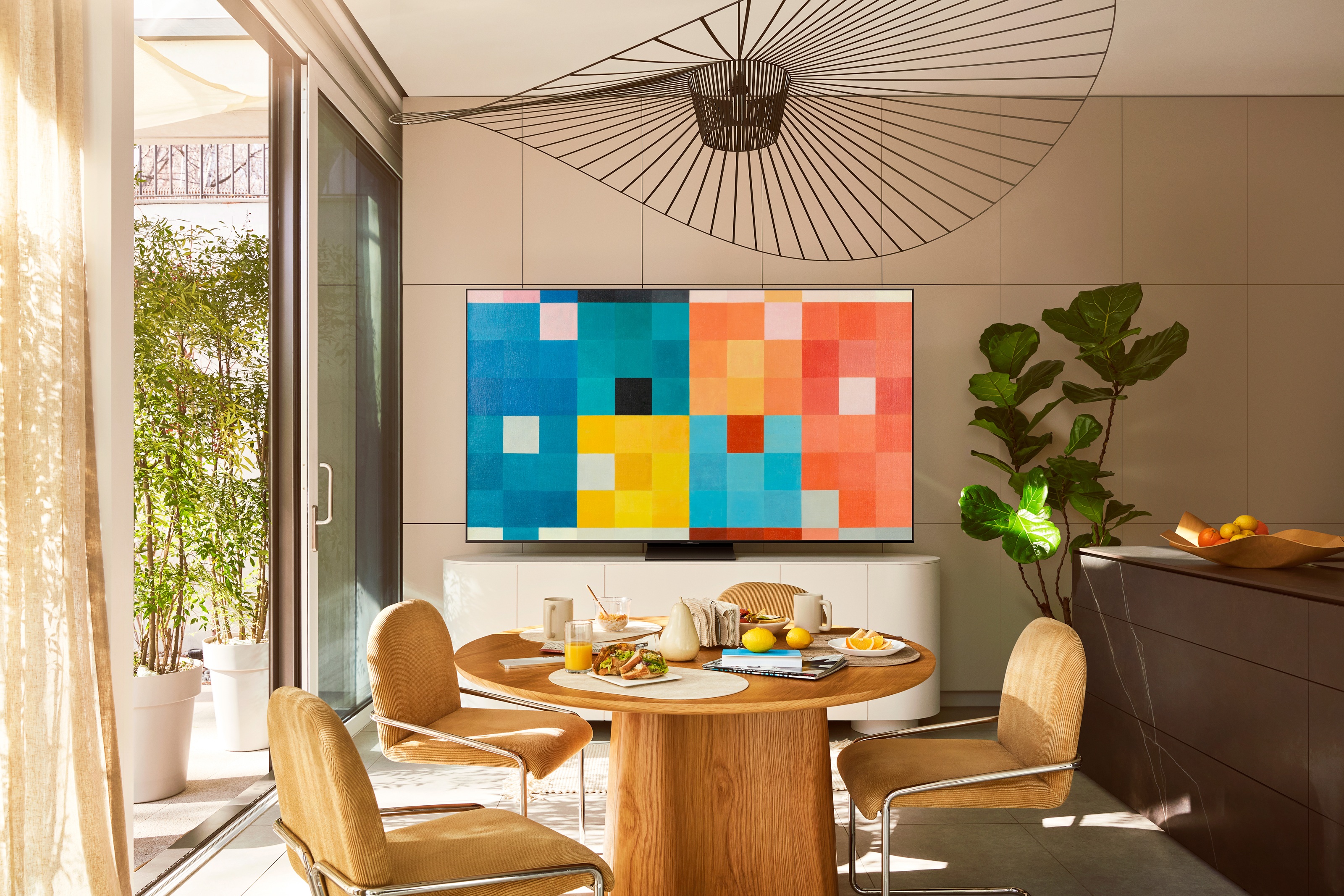

Samsung is primarily a display manufacturer, and that special skill shot it to fame internationally. So big in this area is the Korean company that it even supplies some panels for high-end TVs for Japanese brand Sony — which once upon a time set the bar on displays.
What Samsung has also managed to do is scale up its manufacturing — for us, that means the prices have come down. Yet new technology continues to evolve every year, and the best TV brands are now better and yet more affordable than ever.
Beyond the display itself, Samsung uses its smarts as a software developer to offer a seamless experience of smart apps, connectivity for smartphones, and ease for gaming and internet access. Plus, its screens are always pushing the limits of what design can do to enhance any room the TV is put into, with more screen and less bezel for a truly futuristic finish.
From OLED to Neo QLED to Mini-LED, Samsung has a whole host of technologies to pick from in its TV ranges. That could mean going for a giant top-end Samsung S95F, or future-proofing yourself with an 8K Samsung QN990F, or simply being budget-friendly but getting QLED performance with the Samsung Q70D. Or perhaps you are a gamer who wants lightning-fast refresh rates, in which case the 4K and 144Hz Samsung S90F could be your ideal match. That's just the start with all the options.
The point here is that there are a lot of types to suit a lot of different needs. While one person might want an OLED for inky blacks in a dark room watching a movie, another might want top-peak nits brightness to enjoy watching sport in daylight. Point is, there's a Samsung model to suit most needs.
I've been reviewing Samsung TVs for nearly two decades now, so I've seen fads come and go and also learned to spot exciting new tech that's changing the game. Of the best TVs out there, you will always find a few Samsungs near the top of those lists. I've visited manufacturing plants, been in-house with the software engineers, and interviewed some of the key developers who decide how these technologies are developed — I've even been asked to advise on the development process. I've also worked with the Livingetc editorial team to get the best possible overview because, after all, we don't just find the best technology out there, but the perfect aesthetics too.
The Best Samsung TV for Gaming
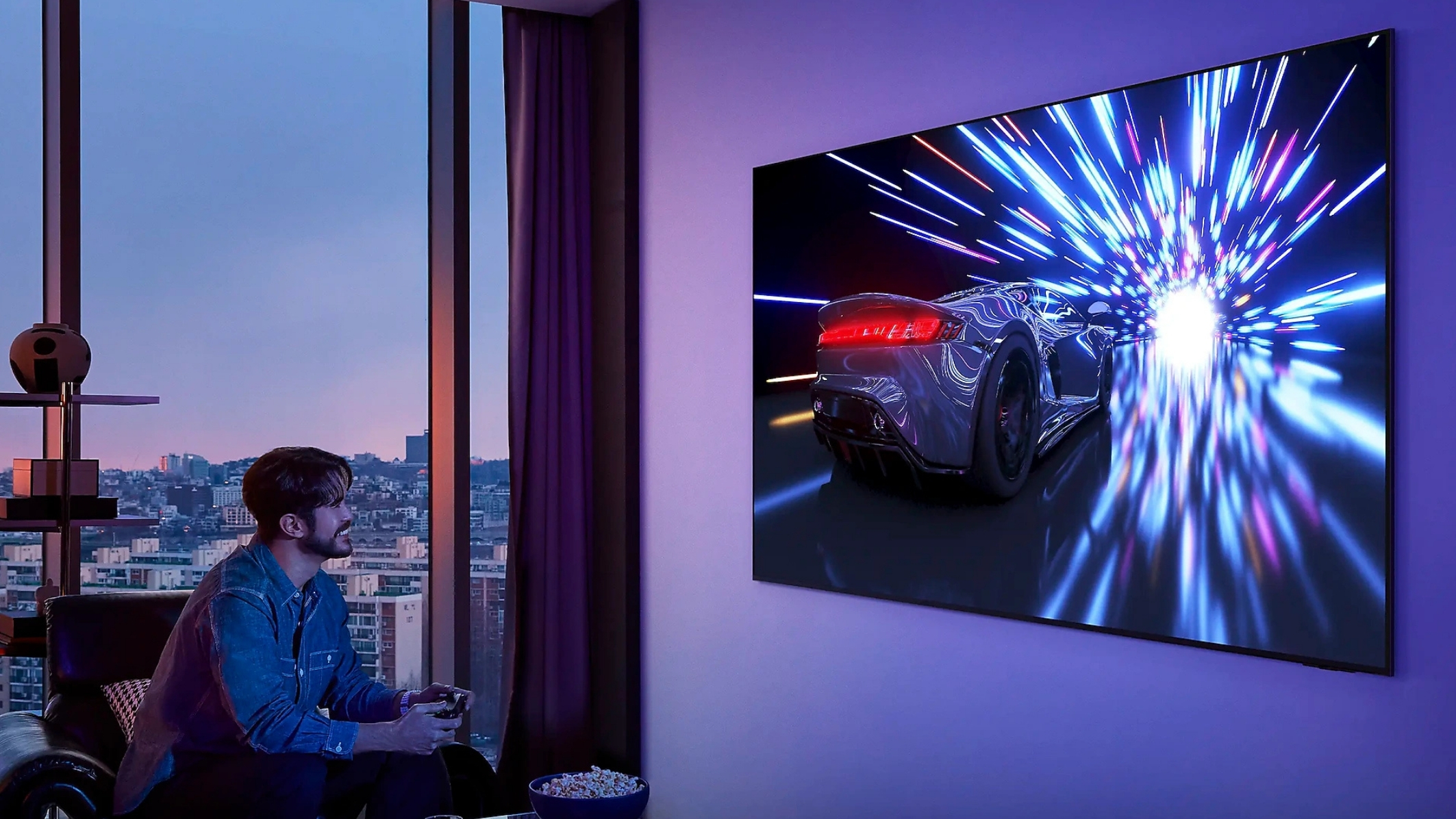
Samsung S95F: Best for gamers who demand the responsiveness that only a 165Hz panel can offer. The fact that it also offers 4K resolution for pixel clarity and depth leaves gamers very little excuse for not winning.
You'll also want to think about a gaming headset to keep things immersive as well as private. Some options to consider include:
Logitech G PRO X 2 LIGHTSPEED Wireless: Great for closed-back over-ear wireless gaming with mic built in but no budget spent on noise canceling.
Audeze Maxwell Wireless: Ideal for big budgets that want planar magnetic transducer quality with over-ear comfort, microphone clarity, and Hi-res Bluetooth codec support.
Turtle Beach Stealth 600 (Gen 3): Still one of the best names in gaming headsets, this model offers some of the top features while keeping the price down. Dynamic transducer, wireless connectivity, and flip-to-mute microphone all come as standard here.
The best Samsung TV for a large room
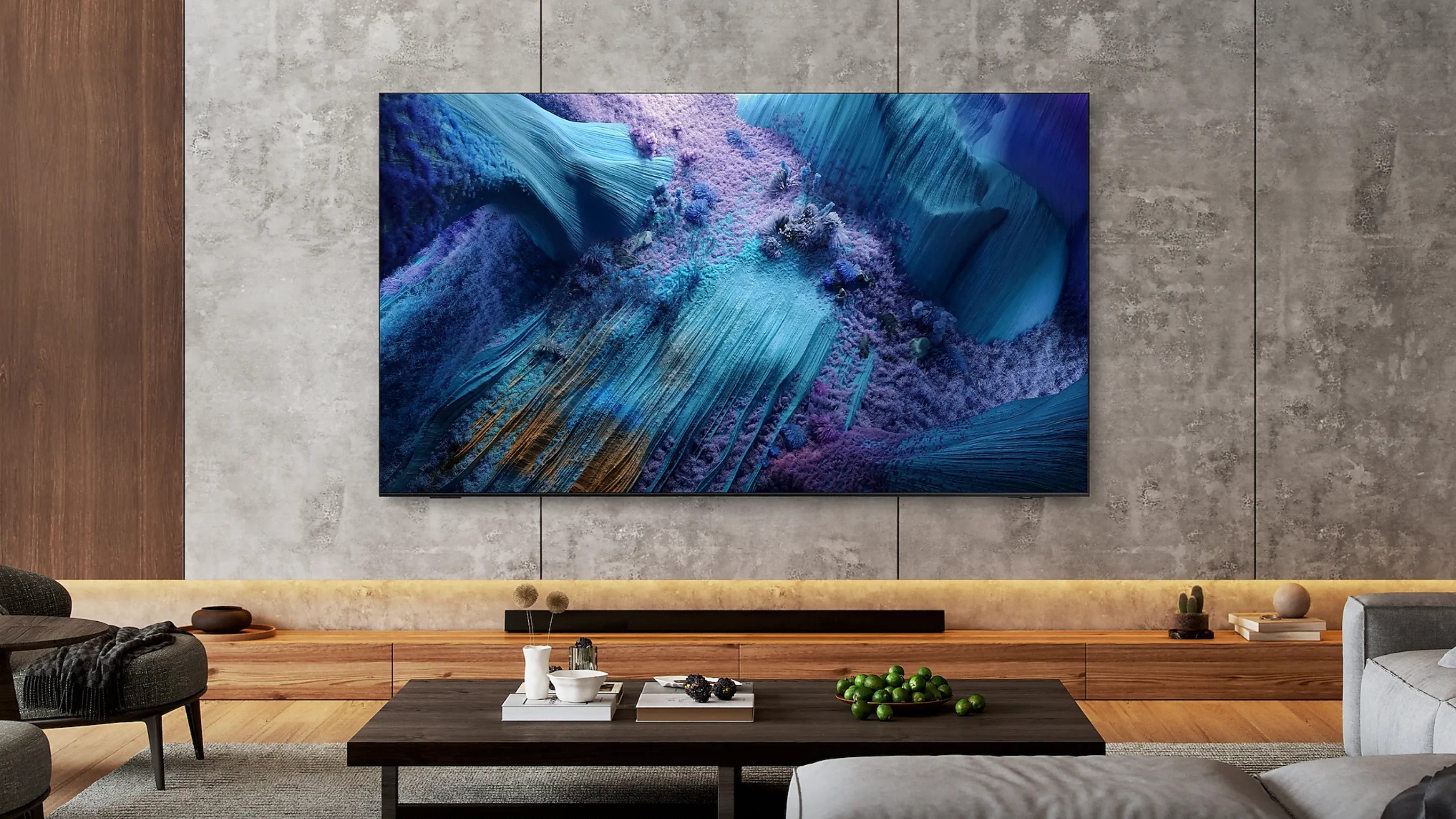
For going large, to fill a bigger room space, you'll want to ensure you have both resolution as well as brightness before scaling up for that bigger panel size too.
Samsung Q70D: Stay on a budget while not having to scrimp on quality with this TV that offers 4K and QLED quality images for rich colors and bright finishes without breaking the bank. That means you can scale up the size without having to spend so much.
8K Samsung QN990F: The best option for anyone who wants to future-proof themselves with an 8K resolution that will keep working even after filmmakers finally catch up. Plus, being 8K, you can go much larger without losing quality.
Samsung S90F: This OLED is a must if you want to go fully premium, meaning you can go larger and still have all the rich colors and deep blacks which you only get from the best OLED options.
The best Samsung TV for a cinematic experience
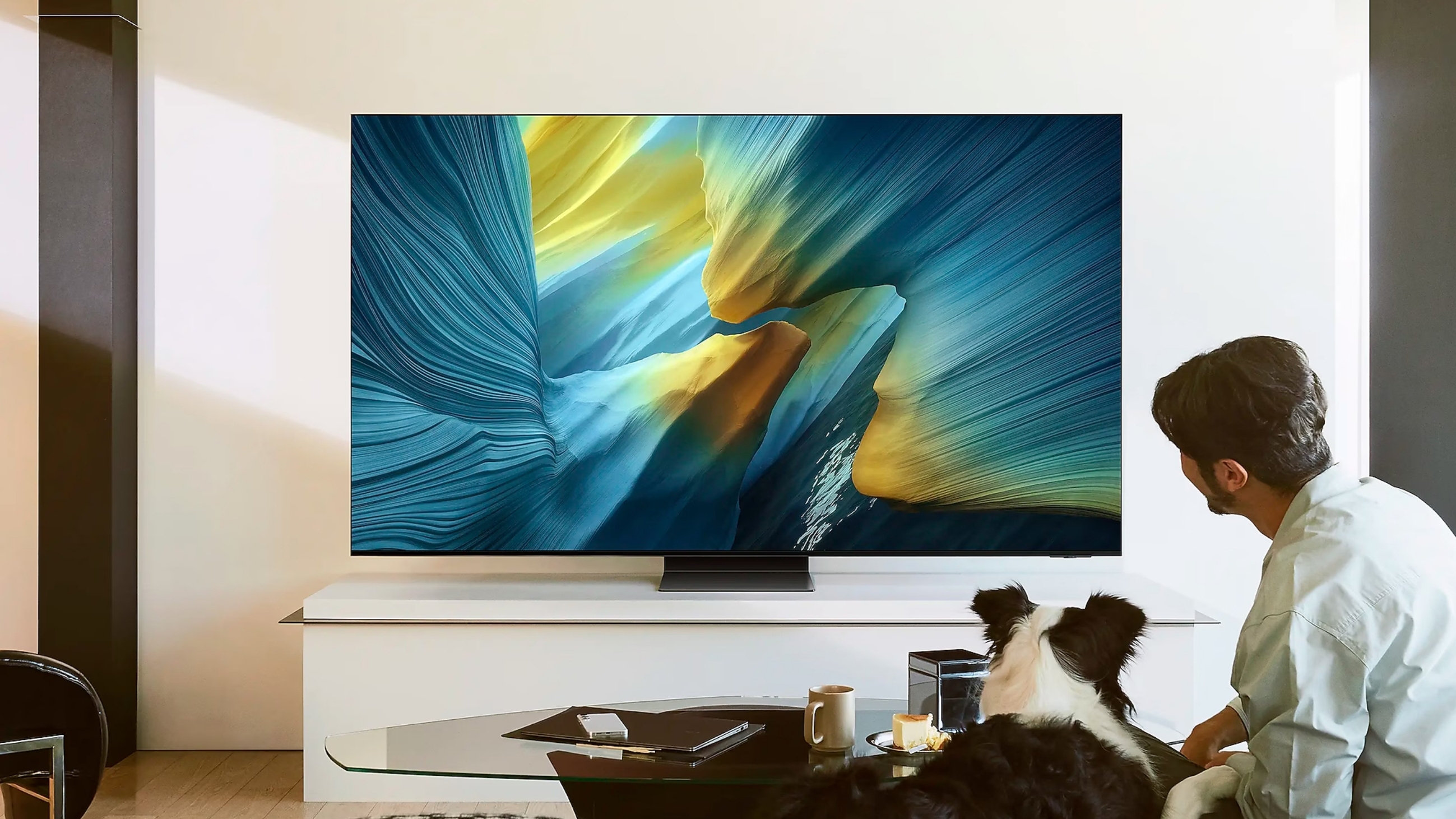
To get the best cinematic experience, you'll want to look at OLED, as it offers a wide range in the darker end, something many directors tend to work with. That OLED does mean they're more expensive, though, so you may want to balance that out with size, since bigger can be better if you're going for a true cinema feel. In that case, it may be worth looking at some OLED alternatives.
Samsung S95F: Ideal for anyone who wants their movies as the director intended, with a rich range of deep blacks from this OLED panel that make for a truly professional viewing experience.
Samsung Q60D: This is a budget option that means you can scale up to the biggest panel without spending too much, yet still get that QLED tech. Yet you also get UHD quality for a decent picture finish.
8K Samsung QN990F: While there may not be much 8K content at the time of publishing, this has excellent digital smarts for scaling up. That means a 4K movie can become far larger on the massive screen while still adding depth and realism that only those extra resolution numbers can achieve.
The Best Samsung TV for a Stylish Home
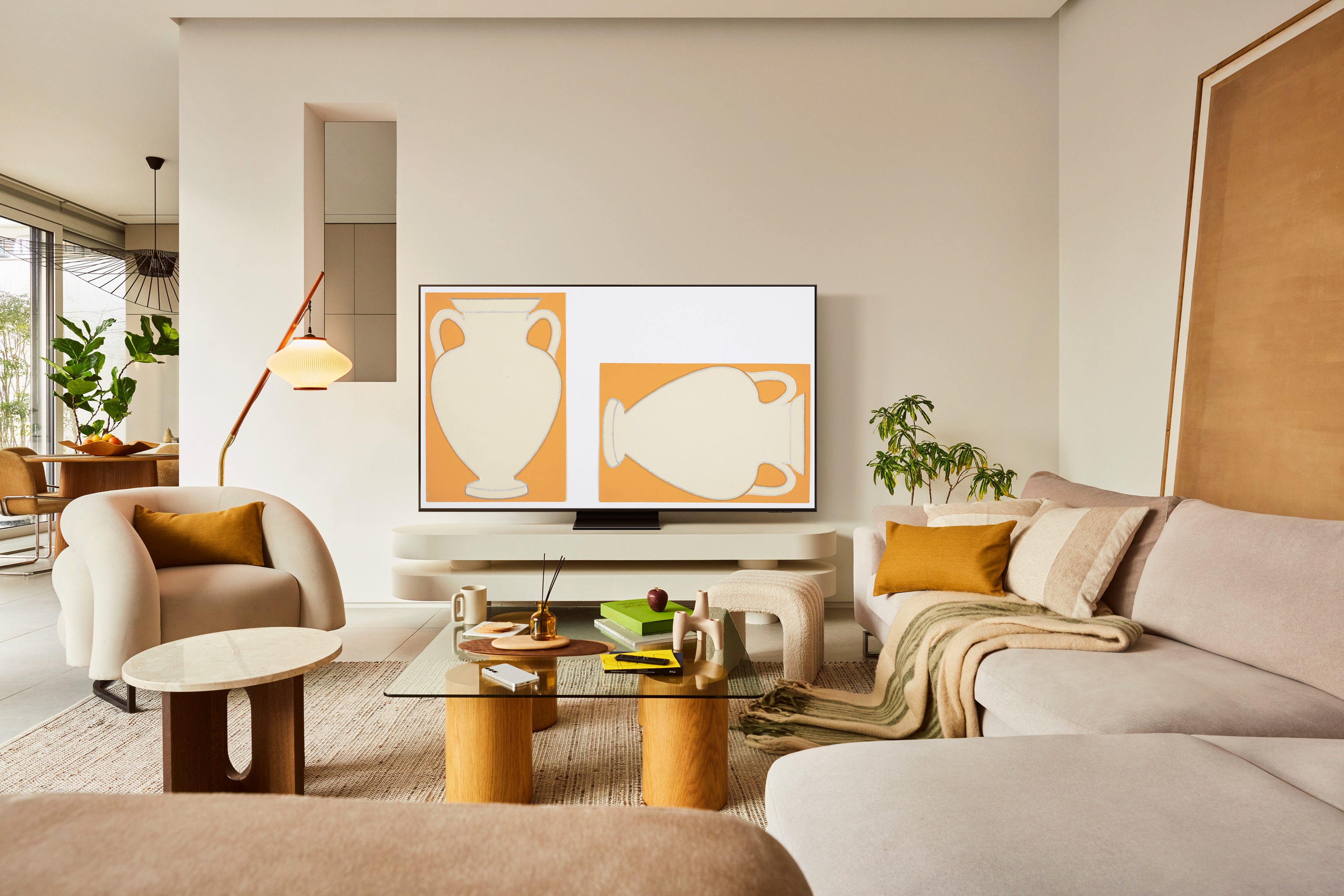
If you want a TV that looks as good off as it does when turned on, then Samsung has you covered with a few options that were designed to enhance the space they're placed into.
Samsung The Frame: This was designed by Samsung to enhance the space by offering a selection of art to be displayed as if in a frame. So slim is the bezel that you can even vary the digital frame to suit the aesthetic of the room The Frame by Samsung lives in.
Samsung The Serif: Another TV made to create a design wow factor, The Serif can be free-standing on the statement leggy stand, or wall-mounted. In either case this offers QLED 4K quality while also making an impression with that minimal and timeless design, and a frame available in various colours.
Samsung Q60D: Minimal yet functional, this blends the look of a modern TV with the smarts of a high-end cinematic experience, all with a super minimal stand design that's easy to place anywhere you need this to live. Plus, the size range is huge, from 43-inch right up to 85-inch, with many options in between.
Best places to shop Samsung TVs
The most obvious place to start your search for your TV is from Samsung itself. You will get reassuring guarantee simplicity, often some decent prices, and attentive service.
John Lewis and Richer Sounds are great options if you want to visit a physical store to have a professional talk you through your options. These guys both offer a price match and an impressive six-year guarantee. Tough to beat.
Seven Oaks is a sound and vision specialist, which means they have the latest models but also some great deals on older Samsung TVs. The outlet section is also worth a look, as it can have some superb displays for less than you might expect.
Currys is now a big name when it comes to TVs, meaning you have a good selection of Samsung options, decent prices as well as some good monthly payment options, decent support, physical pick-up locations, and lots of helpful accessories.
Hughes is an electrical specialist that's worth a visit online and in store as it has some great deals on Samsung televisions with a five-year guarantee, flexi-payment options, and delivery or collection available on some models.
Amazon is an obvious one to mention as it's got free delivery for members, as well as some very low prices. Just don't expect it to always have the best selection.
How Much Do Samsung TVs Cost?
Shopping for a Samsung TV offers quite a wide range of spending options, starting at the lower end, around the £360 mark for a very basic but still respectable option, and climbing into the thousands.
The top end, for a new 8K QLED model with a larger 75-inch panel, will have you looking around the £4,000 mark.
If you're looking for top picture quality, meaning a higher price, then OLED is where your budget will be stretched, but you'll get a lot for your buck. So if you were to go for the top-end Samsung S95F, in a smaller 65-inch variant, you're going to be spending around the £3,400 mark.
That £3,400 is a sweet spot for getting some of the best quality while still going large. That said, you can go far lower, at around the £2,500 range and still get some of the best features, only at a smaller 55-inch top-end for size.
Samsung TV picture quality explained
4K vs 8K: Resolution has long been a headline feature on TV sales sheets. We're past the days of 1080p Full HD and now well into 4K UHD content. But there are also a lot of 8K TVs out there, yet the content for them is not so forthcoming. Granted they do upscale images so you have a high-resolution finish, but it's just pixel replication and not a true quality improvement. So, until there is more 8K content, those screens are still offering minor improvements on 4K. It's worth noting that unless you go larger - 65-inch and above - that 4K resolution doesn't add much to the human eye anyway.
OLED: This stands for Organic Light-Emitting Diode. This uses organic compounds that are lit directly through electrical current. Does that make an OLED TV worth it? That means low power consumption and the ability to light up the pixels themselves. This equates to very precise and strong clarity where one pixel can be lit up white and the one next to it in black, without the grey bleed over you might get on a traditional LED or some QLED models. So directors can have a huge range of darkness, as movies often deliver, that only OLEDs can show clearly, getting the best out of HDR content. This is also super fast, making it ideal for gaming.
QLED: Trying to marry the best of OLED and LED, this uses self-emissive pixels and gets you more darks, but while keeping that high-end brightness, far punchier than OLED can handle. That's why these are great for daytime viewing of things like sport,s where a bright image is often preferable, but still with enough blacks to handle an evening movie really well.
Mini-LED: This uses older LED tech shrunk down to get a better finish on blacks and minimal bleed, while still offering super bright images and keeping the price down. So this too can be good for sport, ideal if you want a larger screen without such a steep price.
Hz: This is a measure of the refresh rate of the screen. The higher the number, the faster the refresh rate. That should equate to a smoother finish which is what you'll want to look for if your goal is to enjoy fast moving sports or gaming on your TV.
Samsung TV audio explained
Televisions are now thinner than they've ever been, which means speakers are also smaller than ever. While that did mean a sacrifice in audio quality once, nowadays the technology is so advanced that even those small speakers can produce impressive audio. In fact, Samsung TVs have settings that are specifically suited to enhance what you're watching, be that for a clearer voice, more dynamic music, or the explosive power of a movie having full effect.
All that said, these are still small speakers without a subwoofer, so if you want a more impactful experience — or true surround sound — then you will need to go for a separate sound system.
Samsung announced its partnership with Google to offer Eclipsa Audio in 2025, which is their open-source version of Dolby Atmos surround sound. This should allow YouTube creators to offer enhanced audio performance to viewers.
Samsung OTS Lite is a technology featured on many of its TVs now, which stands for Object Tracking Sound. This moves where the sound comes out of the speakers so that the sound appears to move about the room in conjunction with movements on the screen. Essentially, it's a software smart way of offering a version of surround sound, or as close as you can get to that with TV speakers.
If all that's not enough, you can always pair up using a Samsung Q Symphony soundbar or sound system to make your TV sound better. The TVs carrying that tech can send advanced information to these systems. The result should be an adaptive audio setup that works with what's on the TV to offer you the most immersive and realistic result.
Samsung TV key features deciphered
There are lots of technologies on televisions these days, but are they all worth paying more to get or can some simply be ignored in favour of saving a buck or - more to the point - investing it in what's important to you.
8k TVs
The latest 8K resolution TVs, for example, might offer the most pixels on any display, but do you need that many? Realistically, unless you go for a TV that is 65-inches or bigger, and you have 8K native content, this might not be worth it for many people. This can intelligently upscale 4K content, by pixel cloning, which looks good, but it's not true 8K, and so doesn't really add much. And while 8K content still appears to be stalled as very little is coming through, this could still be a bit of an unneeded expense at this stage.
AI Upscaling
Much like the smarts of 8K, it's the AI upscaling that can help to make for a better end picture. But, once again, this is digital after-the-fact edits which aim to offer a different image. If you're watching movies, where the director intended it to land in a certain way, this could end up working to your detriment. That said, this can also help in some cases - like jumping from 1080p to 4K quality or for adding a HDR (high dynamic range) finish which can leave visuals feeling more realistic. So for this one, if you're watching movies in 4K you likely won't need AI upscaling to add much more.
4K and HDR
Right now a TV without 4K and HDR is rare to find since that is the format most content is created and shared in. That said, they're not all created equal with different streaming services using different methods. For this reason, if you want the best from them all, you will want a TV that supports Dolby Vision, HDR10+ and HLG. Crucially these offer more brightness, greater color range and enhanced HDR finish. So if you want a specific TV, make sure to check it can support the streaming service you use most, with the format it uses, to stream high quality content.
Nits Brightness
Another big sell these days is the figure for nits of brightness a TV can display. This is helpful if you want to watch in daylight and enjoy content like sports. However, it can be too bright for some, leaving your eyes uncomfortable and - especially at night - can make getting to sleep more difficult. That said, it can also make for a more lifelike and realistic image, to a degree. Just be careful that adding more nits doesn't mean washing out colours and losing picture quality in favour of brightness.
Refresh Rates
The Hz refresh rate of a TV can help you to see how well it will smooth out high-speed video for things like movies and gaming. However, it's worth noting that when it comes to OLED, since the pixels themselves are illuminated directly using current, this is the fastest and so that refresh rate is rarely required as part of its advertising. Again, not all content is at higher frame rates so those 144Hz screens might be great for gamers but movie and sports viewers may not actually benefit much going for this over a 60Hz model.
VRR
Variable Refresh Rates is another one that's built for gamers and can offer a more smooth experience - ideal for online gaming. But if you're buying this for TV then it's less relevant.
Smart TV
Most TVs have their own operating systems and apps so you might want to think about what serves you best. While most will have the major apps, like Netflix, Disney+, Apple TV+, BBC iPlayer and the like, some will run on the Google OS which can mean an even greater app selection and a well updated and supported system. Many then offer greater phone interactive controls as well as voice controls for easier search and controls.
How Do Samsung TVs Compare to Other Brands?
Samsung stands out among the television brands out there right now, as a premium option that also has one of the widest ranges of TVs to cover most needs. But there are some standout options where competitors might pique your interest.
Brightness
Samsung stands out for brightness with its QLED and Neo QLED TVs which, when compared to the LG OLED competition, outperforms in terms of peak brightness. The Samsung QN90F, for example, is a Neo QLED with 4K, AI processing and 144Hz refresh rate screen that offers a top brightness of over 2,000 nits brightness in real world testing. By comparison the LG C5 OLED tops out at just over 1,000 nits in real world tests.
Smart features
When it comes to smart features that allow you to use the TV for apps, connectivity with other devices, phone interactions, voice controls, doorbell alerts and more, LG is generally considered the best thanks to its intelligent OS. The LG QNED80 is one of the latest models that features a mini-LED display with that powerful OS backing it all. The equivalent would be the Samsung QN90Fwhich features a powerful OS too but not quite as open as the LG option. Or go for a Sony TV if you want that Google OS for more app options and Android friendliness.
8K resolution
Samsung offers some of the most varied 8K options out there with its Samsung Neo QLED 8K QN990F at the top-end with a £5,000 price tag to match. The competition equivalent would be the Sony Bravia XR Z9K mini-LED screen priced at a far lower £3,800. The LG version would be the 8K Signature OLED at a whopping £14,000, or the more affordable QNED option at £3,000.
Gaming
Samsung TVs are known for their gaming tuning with features like 165Hz refresh rates and support for VRR and ALLM in the likes of the Samsung S90F OLED at just over £3,000. Comparative competition would come from the LG C4, at £750 in the 42-inch size, which offers 120Hz and Dolby Atmos. The Sony Bravia 8, at £1,400 reduced at time of publishing, offers 120Hz, IMAX Enhanced images and features specifically suited for the Sony PS5. Or for an affordable option the Hisense U7NQTUK offers 144Hz from its mini-LEd display as well as Dolby Vision IQ and a built-in subwoofer for audio power.

Luke is a veteran journalist and editor of over two decades where he has written about everything but specialises is technology, science, health and fitness, smart homes and health. He contributes to Real Homes, T3, Tom's Guide and TechRadar, among many other titles. As a father of two, any spare time he gets is enjoyed surfing, reading, hiking, camping and generally getting out in nature.